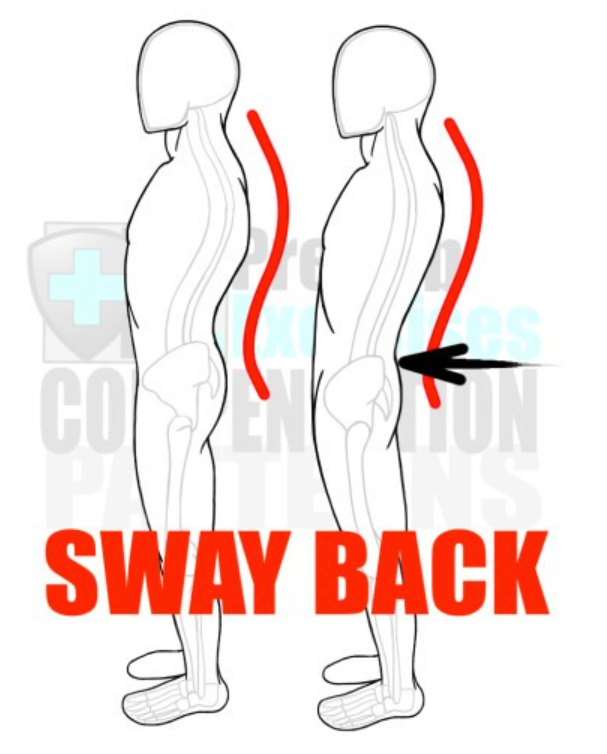Compensation Deficiency - Sway Back – Excessive Lordosis

Another compensation pattern effecting the alignment of the Lumbar Spine (Low Back) is Sway Back. In this compensation pattern, the Lumbar Spine (Low Back) has an excessive amount of extension, placing an inappropriate and unbalanced amount of pressure on the vertebrae and discs
Sway Back occurs due to many different reasons and is characterized by a posture with protruding (forward) Hips and an excessive arch in the Lower Back. Many times, Sway Back is caused by a combination of tightness and/or overactive Hamstrings and Posterior Trunk (Low Back) Extensors. Sometimes, a tight and/or overactive Piriformis muscle contributes to the protruding Hips. Regardless of the cause, Sway Back is dangerous to the biomechanical integrity and health of the Lumbar Spine and may lead to Low Back Pain.
RX: Practice a combination of soft tissue therapy and effective stretching techniques on the following overactive and/or tight muscles: Gluteus Complex (Posterior Hip Muscle), Piriformis (Posterior Hip Muscle), Internal/External Hip Rotators, Psoas (Deep Hip Flexors), Tensor Fasciae Latae (TFL – Superficial Hip Flexor), Semitendinosus (Medial/Middle Hamstring Muscles), Lower Erector Spinae (Low Back Muscles), Lower Multifidus (Low Back Muscles), Iliocostalis Lumborum (Low Back Muscles), and Quadratus Lumborum (Low Back Muscles).
Next, practice Activation exercises to strengthen and facilitate proper firing sequences of the following underactive muscles: Rectus Abdominis (Anterior Core Muslces), Internal/External Obliques (Lateral Core Muscles), Transverse Abdominis (Interior Core Muscles), Quadriceps (Anterior Leg Muscles), and the Intrinsic Foot Muscles.
Finally, practice a variety of exercises integrating these underactive muscles with larger Movement Patterns, including squatting, lunging/step-ups, jumping, running, and even standing. Also, challenge stability, coordination, and balance with single-leg and/or Change of Direction (C.O.D.) exercises.
